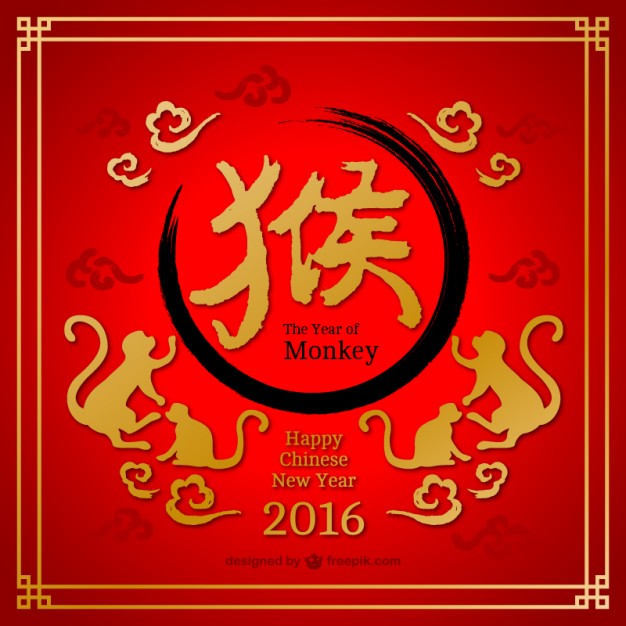The year of the Monkey

The year of the Monkey will soon arrive. February 8, 2016 marked the beginning of a year that is full of friendship, flexiblity and unity. This is the year, which has been given the name Thân Khỉ , as provided by the Vietnamese Lunar Calendar. Tet festival is very important for the Vietnamese and a big part of their culture. See also Sweet Tet Treats and Calligraphy at Tet Festival. As naming the years is not as popular in other parts of the world, things for them might appear a little complicated to put together regarding how the years are named. Whereas the year 2013 was named Quý Tỵ and the year 2014 was called Giáp Ngọ, the year 2015 was named Kỷ Mùi the system of naming the years along with the cycles in the Lunar calendar would, in reality, only require a few basic understanding of this remarkably interesting calendar.
Naming a Vietnamese year is basically done by combining two cycles, the "Ten Heavenly Stems" and the "Twelve Earthly Branches". Twelve Earthly Branches The "Twelve Earthly Branches" ("shi er di zhi") denotes the twelve signs of the zodiac consisting of: Tý (Rat), Sửu (Ox/Buffalo), Dần (Tiger), Mẹo/Mão (Cat/Rabbit), Thìn (Dragon), Tỵ (Snake), Ngọ (Horse), Mùi (Sheep/Goat), Thân (Monkey), Dậu (Chicken), Tuất (Dog) and the Hợi (Pig/Boar). Ten Heavenly Stems Meanwhile, the "Ten Heavenly Stems" ("shi tian gan" ...), comprised of Giáp, Ất, Bính, Đinh, Mậu, Kỷ, Canh, Tân, Nhâm and Quý are further associated with the concept of Yin and Yang as well as of with the five "Basic Elements" where Giáp and Ất belongs to "Wood", Bính and Đinh to "Fire", Mậu and Kỷ to "Earth", Canh and Tân to "Metal", and Nhâm and Quý to the element "Water".
In relation to the two basic properties "yang" (Am) and "yin" (Duong), Giáp, Bính, Mậu, Canh and Nhâm are known to hold the qualities of "yang", while Ất, Đinh, Kỷ, Tân and Quý possess the "yin" qualities. Naming the year So putting two and two together, combining this year’s heavenly stem (Kỷ) in parallel with its property (yang) and Basic Element (Fire) to its earthly body monkey (Thân), 2016 Thân Khỉ is labeled as "Yáng Fire Monkey". Combining in a round-robin manner the two shorter cycles of the "Can", or the ten-year cycle denoting the "Ten Heavenly Stems" and the "Ky" or the twelve-year cycle in congruent with the "Twelve Earthly Branches", a greater cycle of 60 years is formed. Derived from the least common multiple of 10 and 12, the 60-year cycle (called Can Chi) is more like how the centuries are divided into every 100 years.
The cycle As it cycles continuously, a particular year will return every after 60-year period. Each year in the Can Chi corresponds to a particular year name. Used in China since the second millennium B.C. as its manner of naming their days (pretty much how the Western world names the days of their week). The method utilizing the Sexagenary (Stem-Branches) cycle is evident throughout the Zhou dynasty as their records were found to be written in such manner. Its popularity is seen much widely around 202 BC-8 A.D. during the period of Western Han Dynasty.
How and when it was adopted by several other East Asian countries (Japan, Korea, Vietnam...) varied throughout history. Since a particular year returns after every Can Chi or passing sexagenary cycle, a year that began in 2000 will therefore enter a new cycle by year 2060. In the same manner, the previous Thân Khỉ took place in 1956 which is exactly 60 years from today. When this cycle ends, the next Thân Khỉ, then, won’t be around until year 2076.









